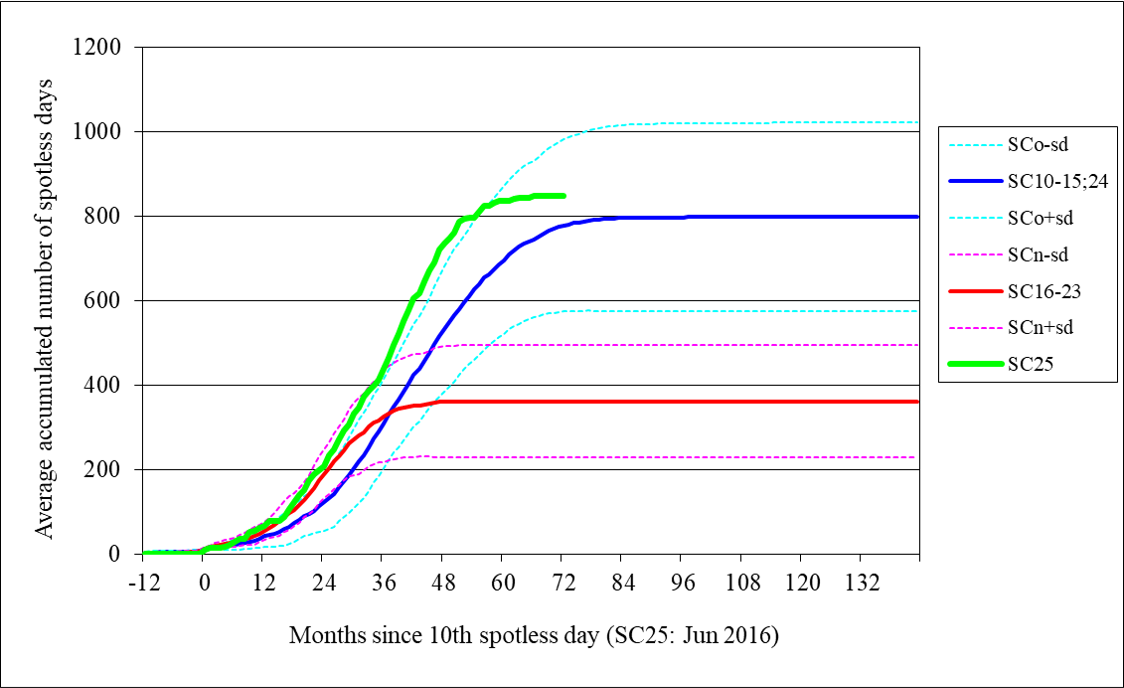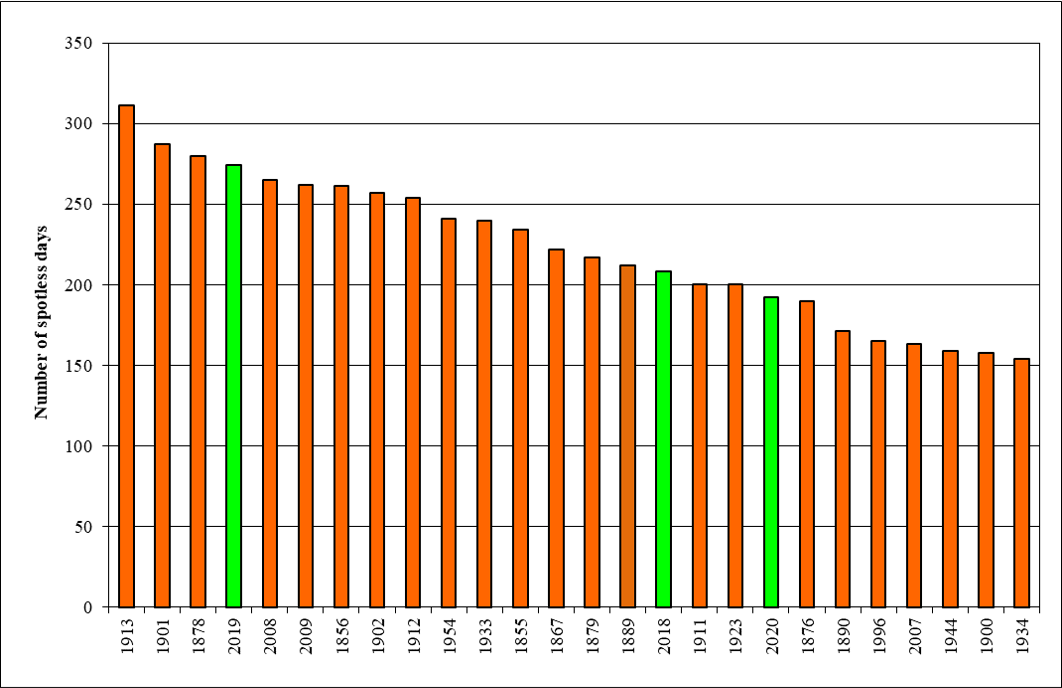AR2718 persists as a very small beta, but it seems to be decaying now.
The EISN for the past three days has been 12 to 13, so the average mean to date for August is slightly less than 4. If there are no more active regions generated during August, then the average EISN monthly mean for August would be approximately 2, which is higher than July 2018's ISN of 1.6.
cf: http://www.sidc.be/sunspots/bulletins/m ... 201807.pdf
Will the months of September, October, and November be closer to zero? Stay tuned. If more relatively inactive sunspot regions come from the Northern Hemisphere, and if the average smoothed monthly mean continues to be below five, then this will be an indication that this current solar minimum will persist for perhaps several more years. On the other hand, if more persistent and actively flaring regions start to appear in the Southern Hemisphere, and if the average smoothed monthly mean starts to increase and is more than ten, then this will mean that we could be approaching the peak of a new solar maximum faster than expected. It is too early to tell.
However, for this current solar minimum (Cycle 25), the tally of spotless days according to spaceweather.com is 269, which already exceeds the shortest solar minimum predicted by Belgium at 233 spotless days in the chart shown below. By October 4, 2018, this chart will be updated as the charts in this analysis are updated every three months. Again, it is still too early to tell. If this current solar minimum continues, we could be in for a much longer solar minimum of 600 to 1200 spotless days, or even longer following the light blue line.

According to the Royal Observatory at Belgium, the predicted short solar minimum is 362 days plus or minus a standard deviation of 134. This would give 362 - 134 = 228 days, which has already been exceeded as July 2018's figure was 235 according to Belgium, or 362 + 134 = 496 days. It will take at least nine more months of spotless days to reach the figure of 496. Thus, the earliest we will know will be summer 2019, twelve months from now.
A more conservative and longer solar minimum would consist of 800 days plus or minus a standard deviation of 224.
This would give 800 - 224 = 576 days, or 800 + 224 = 1024 days. Thus, only after one to two more years of spotless months, by the summer of 2019 to the summer of 2020, will we be able to see if this solar minimum will be shorter or longer than predicted by Belgium. Nevertheless, we could be in for a surprise as a Maunder or Dalton Minimum could bring on ten to twenty to one hundred plus years of spotlessness. We are long overdue for such an event.
Another milestone: Below is the chart of the top 25 years with the most number of spotless days since 1849. To date (July 17, 2018), according the spaceweather.com, 2018 has had 132 spotless days. For the year 2018, if we only have 18 to 30 more spotless days, which is highly likely, then the year 2018 will be included within those top 25 years as having more than 150 spotless days. Thus, around January 4, 2019, the chart below might be upgraded to include the year 2018. I predict that 2018 will have at least 150 spotless days, but that figure could be closer to 200 days if we continue to have an average of 20 spotless days per month for the next four months. Remember, in July 2018, we experienced 27 spotless days. August 2018 has already given us 11 spotless days, with a possibility of 13 more to the end of the month. That could total 24 days.
Notice that in the last solar minimum, cycle 24 (2004 - 2011), we had three years (2007, 2008, 2009) of deep solar minimums. Each of these three years were included in the top 25 years of spotlessness.

The latest from NOAA:
Issued: 2018 Aug 17 0030 UTC
Prepared jointly by the U.S. Dept. of Commerce, NOAA,
Space Weather Prediction Center and the U.S. Air Force.
#
Joint USAF/NOAA Solar Region Summary
SRS Number 229 Issued at 0030Z on 17 Aug 2018
Report compiled from data received at SWO on 16 Aug
I. Regions with Sunspots. Locations Valid at 16/2400Z
Nmbr Location Lo Area Z LL NN Mag Type
2718 S08E23 191 0010 Bxo 02 02 Beta
IA. H-alpha Plages without Spots. Locations Valid at 16/2400Z Aug
Nmbr Location Lo
None
II. Regions Due to Return 17 Aug to 19 Aug
Nmbr Lat Lo
None

